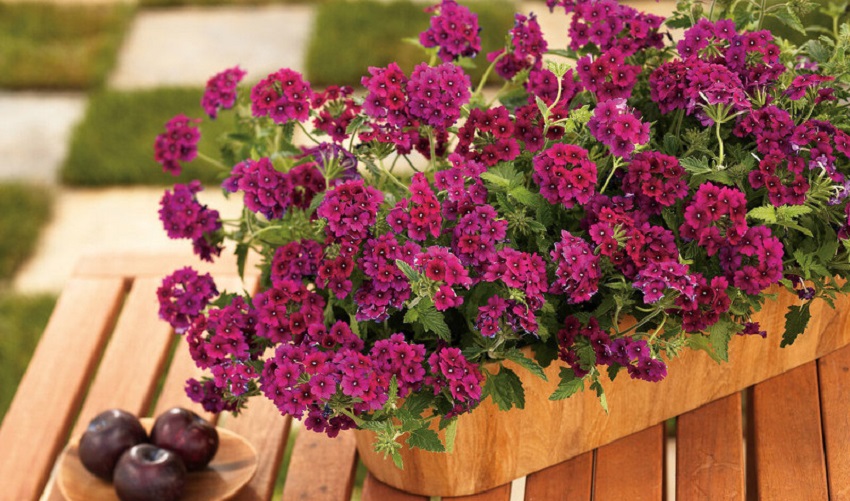Verbena is a beautiful flowering plant that is popular among gardeners for its vibrant colors and ease of verbena care. Whether you’re a seasoned gardener or just starting out with plant care, this article will provide you with important tips and guidelines for successfully growing and maintaining a healthy verbena plant.
Choosing the Right Variety
- Selecting the right variety of verbena is crucial for achieving successful growth. There are many species and cultivars available, each with its own unique characteristics.
- Consider factors such as the climate in your region, the amount of sunlight your garden receives, and the specific aesthetic you are looking to achieve.
- For hot and dry climates, consider choosing varieties such as Homestead Purple or Tapien Purple, as they are known to tolerate harsh conditions.
- If you live in a region with cooler summers, opt for varieties like Moonlight, Snowflurry, or even Black Dragon Rose, which can handle lower temperatures.
Location and Sunlight Requirements
- Verbena plants thrive in areas with full sunlight exposure, so it is essential to select a location that receives at least 6-8 hours of direct sunlight each day.
- Ensure that the chosen spot has well-draining soil to prevent waterlogging, as verbena plants are susceptible to root rot.
- If you are planting verbena in pots or containers, make sure to use a well-draining potting mix.
Watering and Moisture Levels
- Verbena plants have moderate water needs and are relatively drought-tolerant once established.
- Water your verbena plants regularly but ensure that you do not overwater them, as this can lead to root rot.
- Use the finger test to check the moisture level of the soil. Stick your finger about an inch into the soil, and if it feels dry, it’s time to water your verbena.
- During hotter months, increase the frequency of watering to keep the soil evenly moist.
Fertilization
- Regular fertilization helps promote healthy growth and abundant blooms in verbena plants.
- Use a balanced, slow-release fertilizer formulated for flowering plants during the growing season.
- Follow the instructions on the fertilizer packaging to avoid overfertilization, which can result in excessive foliage growth at the expense of flowers.
Pruning and Deadheading
- Pruning verbena plants is essential for maintaining their shape, encouraging bushier growth, and prolonging their blooming period.
- After the first flush of blooms, trim back the spent flowers to promote continuous flowering.
- Regularly prune back any leggy or overgrown stems to maintain a compact and tidy appearance.
- Avoid pruning verbena plants too late in the growing season, as this can interfere with their ability to survive the winter.
Pests and Diseases
- Verbena plants are generally resistant to pests and diseases, but they can occasionally face issues such as powdery mildew or aphid infestations.
- Monitor your verbena regularly for any signs of pests or diseases, and take appropriate action at the first sign of trouble.
- Avoid overwatering and ensure proper air circulation to prevent the occurrence of powdery mildew.
In conclusion, verbena is a versatile and visually appealing plant that can enhance the beauty of any garden or landscape. By following the tips and guidelines provided in this article, you can ensure that your verbena plants remain healthy, vibrant, and in full bloom. Happy gardening!
FAQs (Frequently Asked Questions)
- Q: How often should I water my verbena plants?
- A: Water your verbena plants regularly, keeping the soil evenly moist but not waterlogged. Increase the frequency of watering during hot and dry periods.
- Q: Can verbena plants survive in colder climates?
- A: Certain varieties of verbena, such as Snowflurry and Moonlight, can tolerate lower temperatures and are suitable for cooler climates.
- Q: When should I prune my verbena plants?
- A: Prune your verbena plants after the first flush of blooms to encourage continuous flowering. Avoid pruning too late in the growing season.
- Q: How do I prevent powdery mildew in my verbena plants?
- A: Ensure proper air circulation, avoid overwatering, and promptly address any signs of powdery mildew by using appropriate fungicides if necessary.
- Q: Can I grow verbena plants in containers?
- A: Yes, verbena plants can be grown in containers. Use a well-draining potting mix and place the container in an area with full sunlight exposure.
Remember, providing proper care, sunlight, water, and maintenance are key to growing healthy and vibrant verbena plants. Enjoy the beauty of verbena in your garden and create a colorful and lively outdoors!





Average Rating